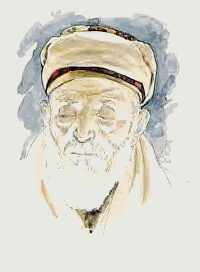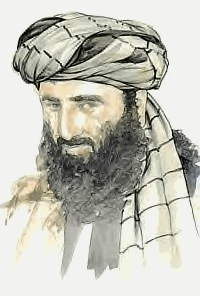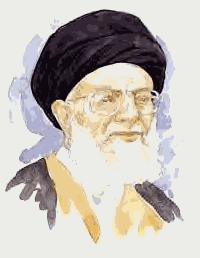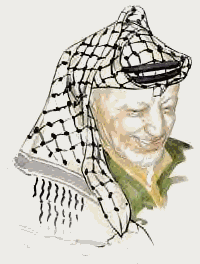Sikhs & Turbans are Synonyms, however don't be surprised to find that there are MANY FAITHS OF NON INDIAN ORIGIN in modern & pre historic period which have given utmost importance to this head gear.
The name "turban" is found in this form in European languages:
The English word turban is believed to have come from the Persian word dulband, a word which is also thought to be the etymological predecessor of "tulip" and of the Spanish word for hammerhead shark, torbandalo.
Greek--turban, English--turban, turbaned; French--turban, tulband; German--turban; Italian, Spanish and Portugese--turbante; Dutch--tulbans; Romanian--tulipan; in Latin, it is the miter; and it is generally traced to the Persian sarband. In Turkish, sarik is the usual name for turban. In ancient Egyptian civilization the turban was considered an ornamental headdress. They called it pjr from which perhaps is derived the word pagari or pugree, so commonly used in the Punjab of India.
Prophet Muhammad (PBUH) himself spoke strongly in favor of the turban, as can be seen from the following hadiths, i.e., sayings of Prophet Muhammad (PBUH).
"The turban is a frontier between faith and unbelief." --
"My community shall not fall away so long as they wear turban." --
"At the day of the judgment, a man shall receive a light for each turn of the turban round his head." --
"Wear turban, for thus you will gain in generosity." --
"Wear the turban and thus distinguish yourselves from the peoples who came before you." --
"My community shall not fall away so long as they wear turban." --
"At the day of the judgment, a man shall receive a light for each turn of the turban round his head." --
"Wear turban, for thus you will gain in generosity." --
"Wear the turban and thus distinguish yourselves from the peoples who came before you." --
One of the commands of God to Moses was to wear turban as the symbol of prophethood, holiness and divine power.
Turban in the Old Testament
"Put on the turban as the Lord has commanded Moses."
"Put on the turban as the Lord has commanded Moses."
"They made the tunic of fine lines, woven work for Aaron and his sons, the miter (turban) of fine linen, the tall head dress and their bands all of fine linen, the drawers of finely woven linen, the sash of woven linen, as the Lord had commanded Moses."
(Exodus 39, 27)
(Exodus 39, 27)
"These are the vestments they must make: breast plate, ephod, robe, embroidered tunic, turban and girdle."
(Exodus: 28-4)
(Exodus: 28-4)
"Holy to the Lord"; and they fastened it on a violet brand to fix it on the turban at the top as the Lord had commanded Moses.
(Exodus 39-29)
(Exodus 39-29)
Set the turban on his head and the symbol of holy dedication on the turban. Take the anointing oil, pour it on his head and anoint him.
(Exodus 29-6)
(Exodus 29-6)
"Consecrated to Yahweh", as a man engraves a seal. You will secure this to the turban with a ribbon of violet purple; it is to be placed on the front of the turban. The tunic you must weave of fine linen and a girdle, the work of a skilled embroiderer. (Exodus 28-36)
"When God takes away the turban," says Prophet Isaiah; "he takes away the dignity of man."
"That day the Lord will take away the ankle ornaments, tiaras, pendants and bracelets and veils, the expensive dresses, mantles, cloaks and purses, the mirror, linen garments, turban and mantles."
(Isaiah 3:22, 23)
(Isaiah 3:22, 23)
Turban as Symbol of Purity: Now Joshua was dressed in dirty clothes as he stood before the angel of God. The angel said these words to those who stood before him: "Take off his dirty clothes, clothe him in splendid robes of state and put a clean turban on his head." They clothed him in splendid robes of State and put a clean turban on his head. The angel said, "I have taken away your inequity from you. He shall wear a sacred linen tunic and linen drawer to cover himself and he shall put on a linen sash around his waist and wind a linen turban round his head and these are sacred vestments and he shall bathe before putting them on."
(Zechariah 3:4-9)
(Zechariah 3:4-9)
The Turban has long been considered the crown of spirituality: It is essential to Sikh Dharma and also has a special significance in Hinduism, Judaism, Christianity, and Islam. And it is interesting to note that in Islam, the angels and all the prophets are represented as wearing turbans.
Turbans / Head Gears From Around The World
Elders from Yemen, often wear a turban wrapped around a cap known in Arabic as a kalansuwa. These caps can be spherical or conical, colorful or solid white, and their styles vary widely from region to region. Likewise, the color of the turban wrapped around the kalansuwa varies. Not all Muslims wear turbans.
Afghan men wear a variety of turbans, and even within the Taliban, the strict Islamic government that controls much of the country, there are differences in the way men cover their heads. For example, he may wear a very long turban … perhaps two twined together … with one end hanging loose over his shoulder. The Taliban ambassador to Afghanistan, on the other hand, favors a solid black turban tied above his forehead. And some men in Afghanistan do not wear turbans at all, b
Afgahn Cleric

 Afghan Man
Afghan Man
Iranian leaders wear black or white turbans wrapped in the flat, circular style as is the case of the Iranian supreme leader Ayatollah Ali Khamenei. The Greek word turban is thought to have originated in biblical times. The turban is called a sarband, or a dulband among Persians and in some areas of Iran.
Indian men sometimes wear turbans to signify their class, caste, profession or religious affiliation … and turbans in India can be very elaborate. However, turbans made out of fancy woven cloths and festooned with jewels are not unique to India. As far away as Turkey, men have used the head gear to demonstrate their wealth and power.
Today, in rural regions from North Africa to India, poor farmers and nomadic people of various religions cover their heads with simple turbans, the colors and styles of which sometimes identify them as members of a particular tribe or community.
Swami Vivekanand (INDIAN)
(1863 – 4 July 1902, He was a key figure in the introduction of the Indian philosophies of Vedanta and Yoga to the western world )
A Sikh Officer in Indian Forces A typical Turban of an Urban Sikh
Indian State of Rajasthan
The kaffiyeh is an important head gear. It is really a rectangular piece of cloth, folded diagonally and then draped over the head . Men in Jordan, Saudi Arabia and the Arab Persian Gulf states wear kaffiyehs in colors and styles that are particular to their region. Jordanians, for example, wear a red and white kaffiyeh, while Palestinians wear a black and white one. And a man from Saudi Arabia would likely drape his kaffiyeh differently than a man from Jordan. The black cord that holds the kaffiyeh on one's head is called an ekal.
Though no one knows exactly when and where the turban originated, carvings left by the Assyrians, who lived 3,000 years ago in the area that is now Iraq, show turbans on the heads of kings. That means that before there was Islam, or even Christianity, there were turbans.
Following images are of well known 'Before Christ Era' portraits showing their preachers /prophets wearing Turban / Head gear:
Confucius was born in 551 BC, in the Chinese State of Lu.
Zarathustra was believed to have lived during 600 B.C,
and was a religious teacher and prophet of ancient Persia,















REALLY VERY EXCELLENT INFORMATION. I AM VERY GLAD TO SEE YOUR BLOG FOR THIS INFORMATION. THANKS FOR SHARING. KEEP UPDATING Online Sikh Store
ReplyDelete